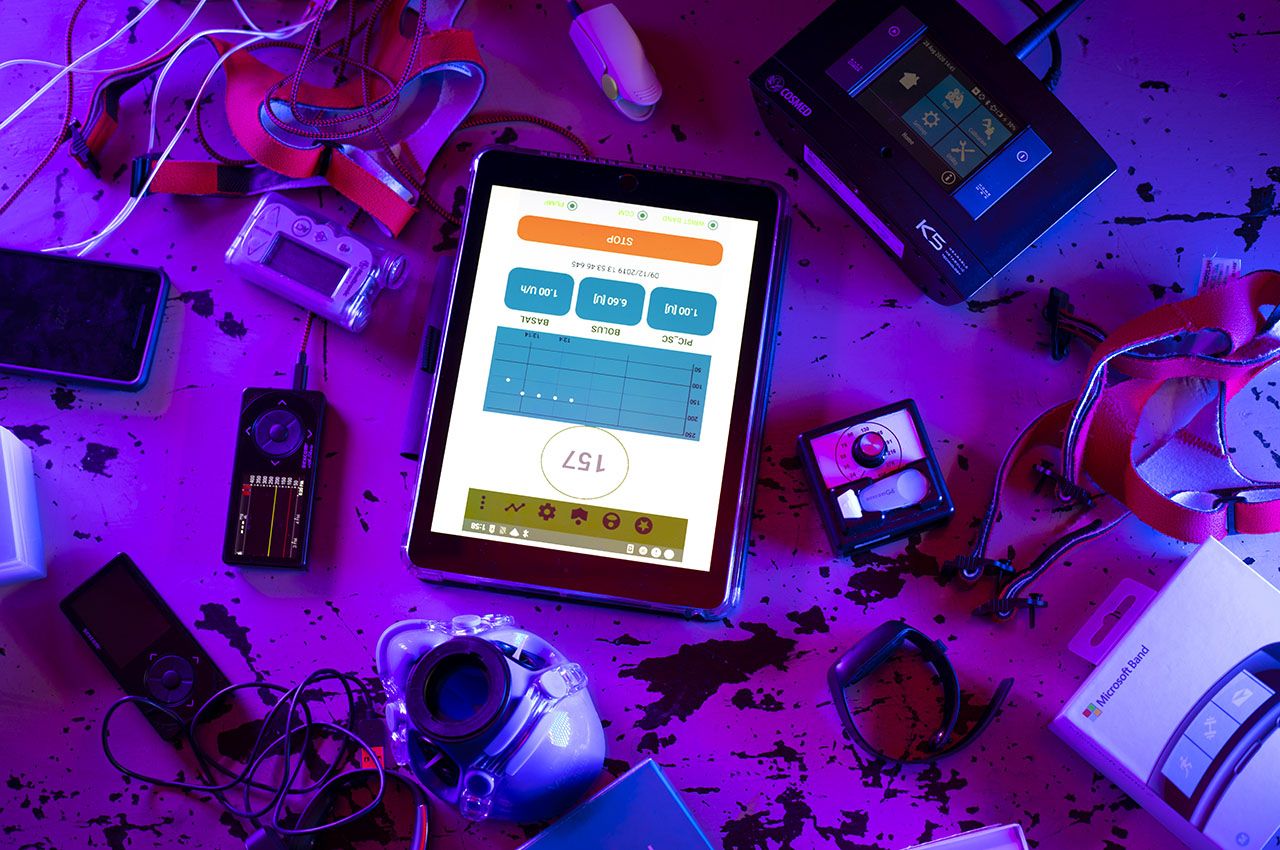Engineering Professor's Patent Advances a Next-Generation Artificial Pancreas System

Artificial pancreas technology has tremendous potential to improve the daily lives of people with Type 1 diabetes beyond what is achievable using traditional methods. New research led by Illinois Institute of Technology Professor of Chemical Engineering Ali Cinar provides the fundamental algorithms necessary for the next-generation technology to further advance artificial pancreas systems, while introducing a new approach for monitoring and regulating the glucose levels of people with diabetes.
His research team obtained a patent from the United States Patent and Trademark Office in May for its invention titled “Multivariable Artificial Pancreas Method and System.”
Since 2004, Cinar, director of the Engineering Center for Diabetes Research and Education, and Hyosung S. R. Cho Endowed Chair in Engineering—alongside co-inventors Kamuran Turksoy (Ph.D. BME ’15) and Iman Hajizadeh (Ph.D. CHBE ’19), have been developing fully automated, multivariable artificial pancreas systems to automatically monitor and infuse insulin according to metabolic changes that occur in response to food consumption and physical activities. The team’s design consists of a glucose sensor, a wristband, a dedicated smart phone, and an insulin pump that is fully automated and does not require manual inputs from the user.
Cinar explains that the regulation of glucose levels requires people with diabetes to conduct an extensive amount of daily maintenance, including testing their blood glucose regularly with a fingerstick or use a continuous glucose monitor. By making management of Type 1 diabetes easier and more precise, this technology could reduce the daily burden of this disease, while also potentially reducing diabetes complications.
While today’s hybrid AP systems still require frequent input and decisions from the user about when and how much insulin to administer, in comparison, a fully automated artificial pancreas alleviates that responsibility from people with diabetes, especially from those who are unable to take care of themselves.
Individuals with Type 1 diabetes must receive insulin from external sources to regulate the concentration of glucose—the main source of fuel for the body—in the blood. However, too much insulin or other diabetes medications may cause blood-sugar levels to drop too low, causing hypoglycemia.
The Illinois Tech team is further developing the multivariable artificial pancreas to interpret the signals from the glucose sensor and the wristband for determining the presence, type, intensity, and duration of physical activities; the presence of acute psychological stress; and the characteristics of sleep. All of these factors affect blood-glucose concentration and an AP system can automatically mitigate their effects.
With current grants from the JDRF, Cinar and his researchers have been refining the algorithms that control their AP system by factoring in additional physiological signals, or bodily reactions, from wearable devices that indicate future variations in blood-glucose concentration. By capturing the information in physiological variables reported by the wristband, Cinar says that his team can interpret the presence of physical activities, sudden physiological stress, and sleep characteristics, and adjust insulin dosing even before these factors affect the glucose levels of individuals with diabetes. This helps to enable the glucose levels of people to remain within the desired range in spite of factors that would cause significant perturbations.
“This is important because to date, there have been very few studies that considered how an artificial pancreas functions in an environment of exercise and proactively manages the potential effects of exercise,” says Cinar.
As stated in the patent description, this invention will “automatically predict and alarm the patient of a predicted future, low blood-glucose concentration,” determining and suggesting responsive measures including carbohydrate consumption. This new method incorporates the automated detection of food consumption and/or a rapid glucose-level increase without manual entries from the patient.
These new modules will also assist in detecting errors in the components and operation of the artificial pancreas to achieve a system that can function in the presence of various equipment errors and limitations in control algorithms.
“Our patented work will assist in making researchers and companies in the United States become aware of this integrative process,” says Cinar. “It will help them develop algorithms to use for interpretations, resulting in better decisions on how much insulin to provide to patients using the artificial pancreas.”
Illinois Tech’s Office of Technology Development manages faculty intellectual property at the university and is in the process of identifying potential startup partners to commercialize this new technology for public use and benefit.
In addition, Cinar and his research team received a patent in 2014 for “Automatic Insulin Pumps Using Recursive Multivariable Models and Adaptive Control Algorithms.” This patent relates to developing adaptive models to describe and predict the glucose concentrations of the user and to automating insulin pumps to reduce or eliminate the need for patient inputs.
These research efforts utilized resources supported by the National Institutes of Health (NIH) under grants 1DP3DK101075-01 and 1DP3DK101077-01, and the Juvenile Diabetes Research Foundation International (JDRF) under grants 17-2013-472 and 3-PDF-2016-175-A-N. Current funding from JDRF (2-SRA-2017-506-M-B and 1-SRA-2019-819-S-B) enable further progress in treatment of diabetes and artificial pancreas research.
The content is solely the responsibility of the authors and does not necessarily represent the official views of the National Institutes of Health.


![[From left to right] Associate Professor of Biomedical Engineering Kenneth Tichauer and Professor of Electrical and Computer Engineering Jovan Brankov](/sites/default/files/styles/width_350/public/2024-11/tichauer-brankov_1280x850.jpg?itok=hxdjBhlU)

